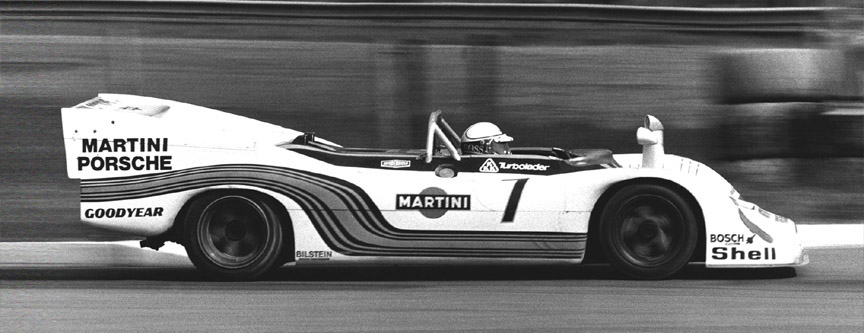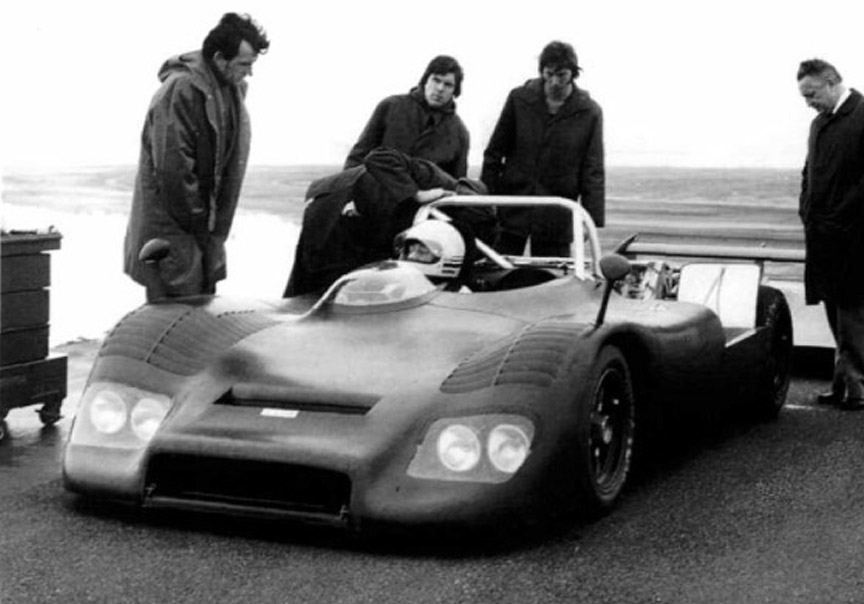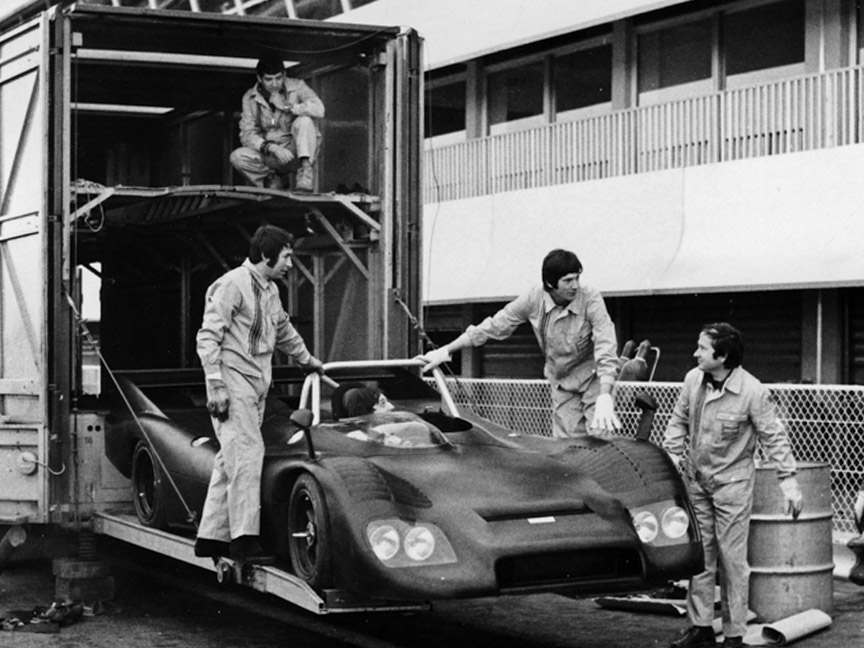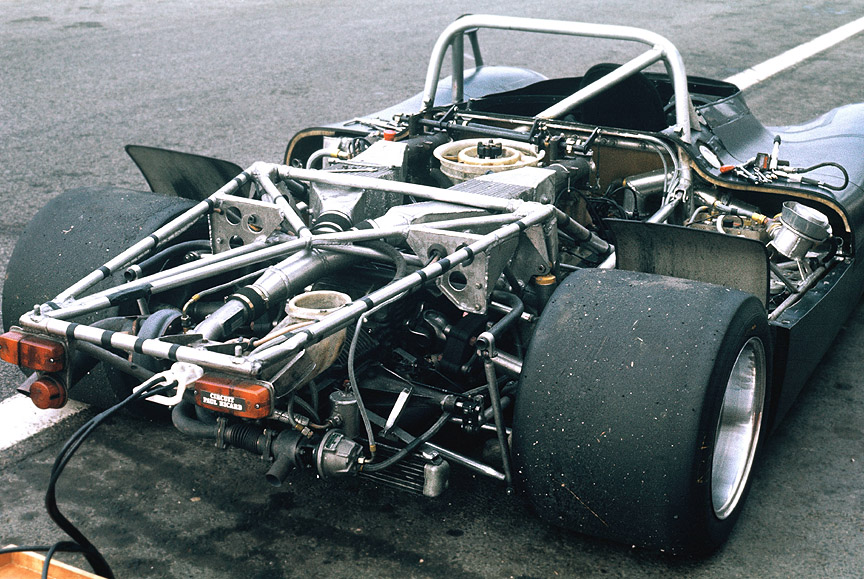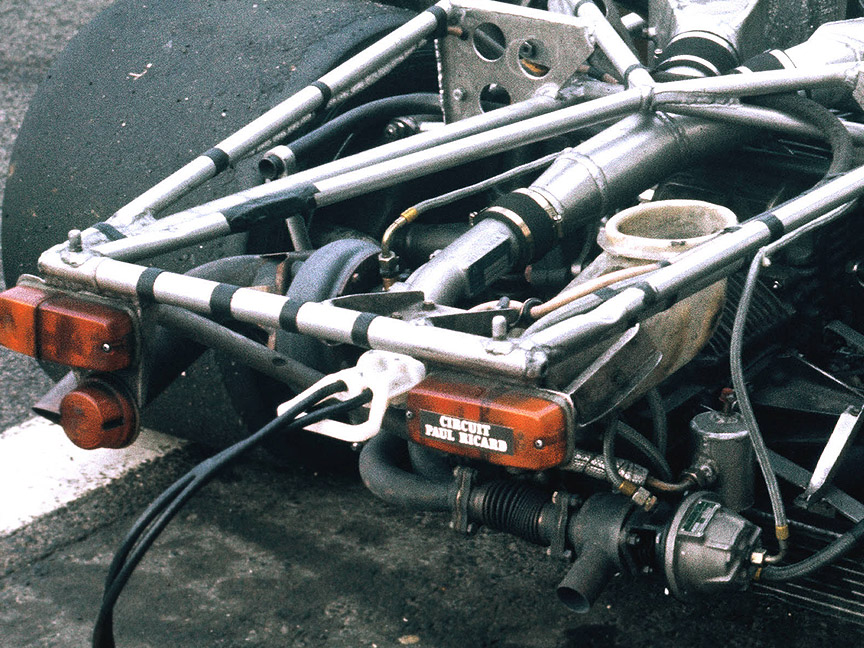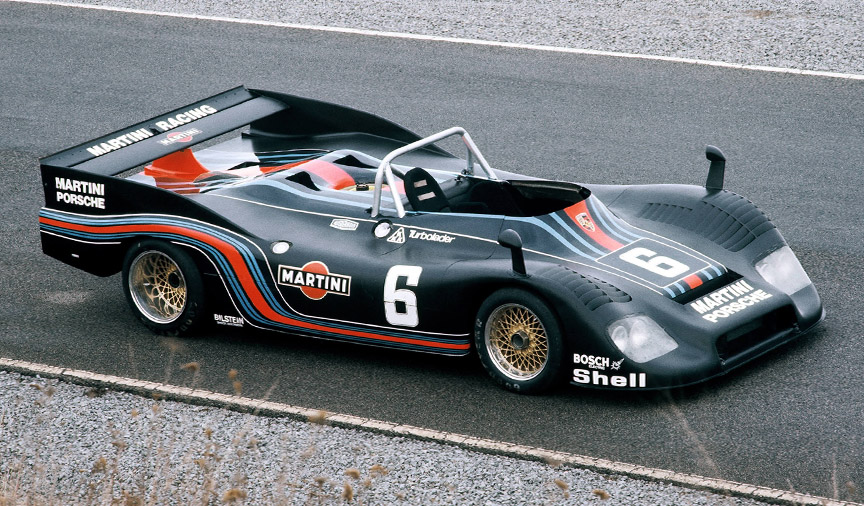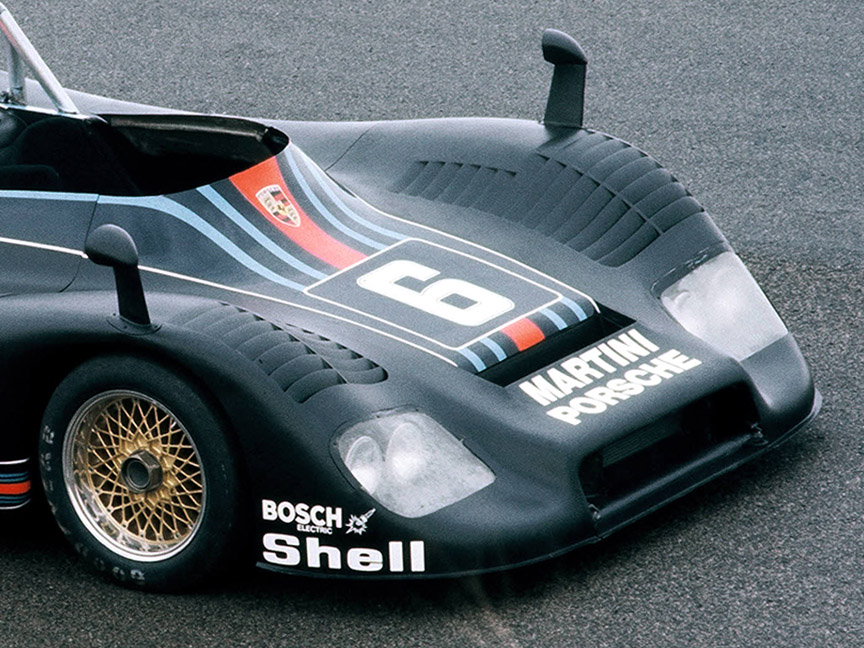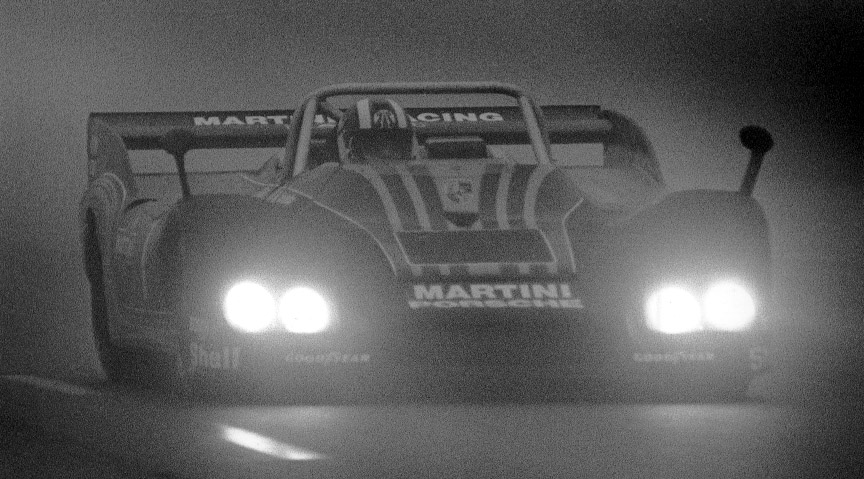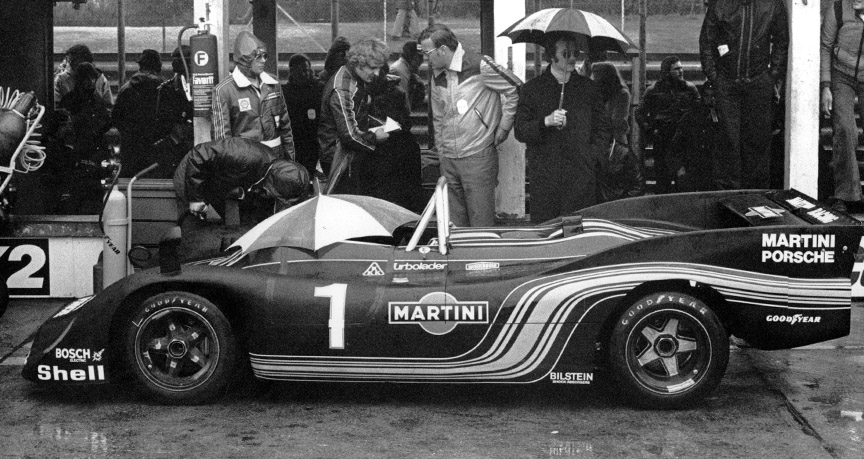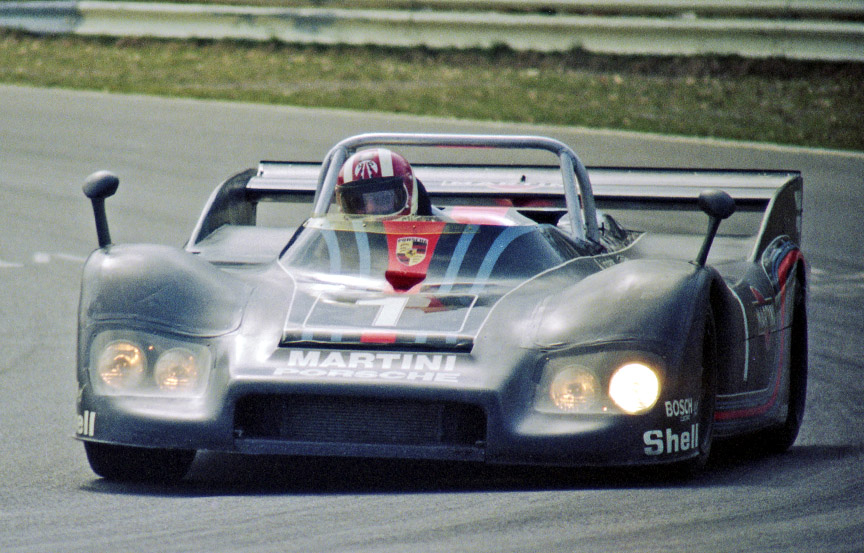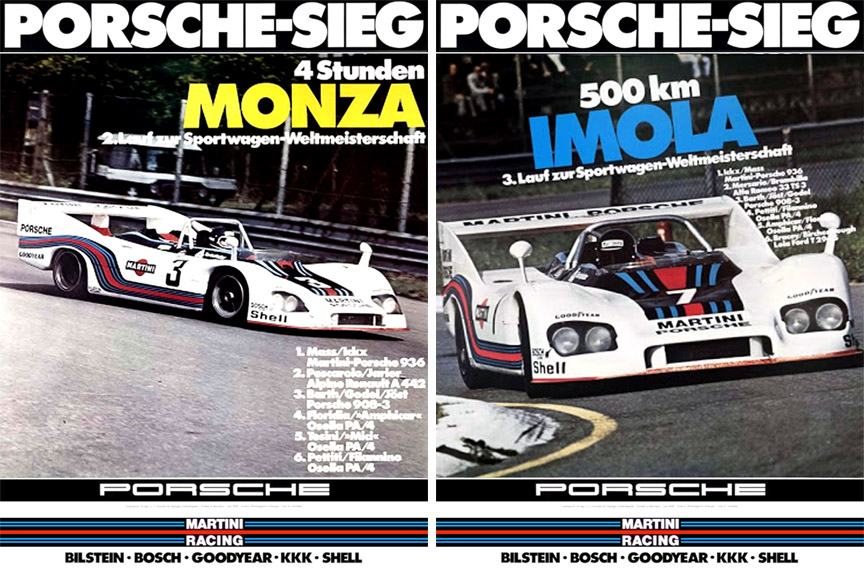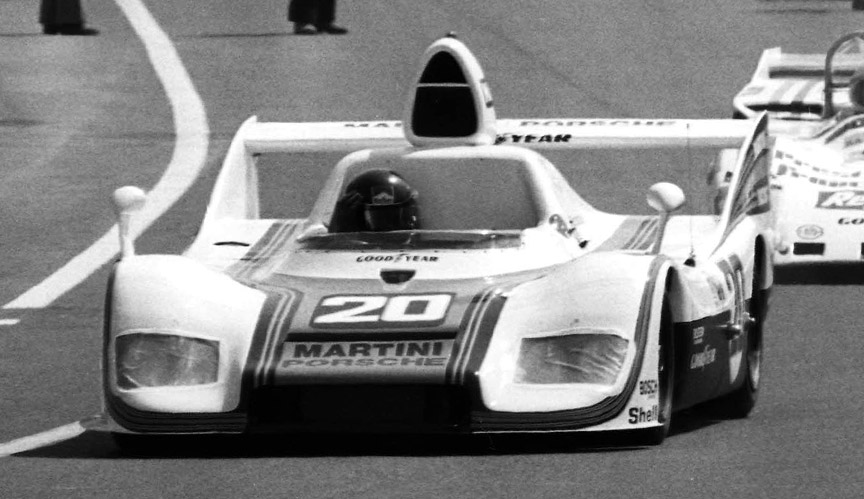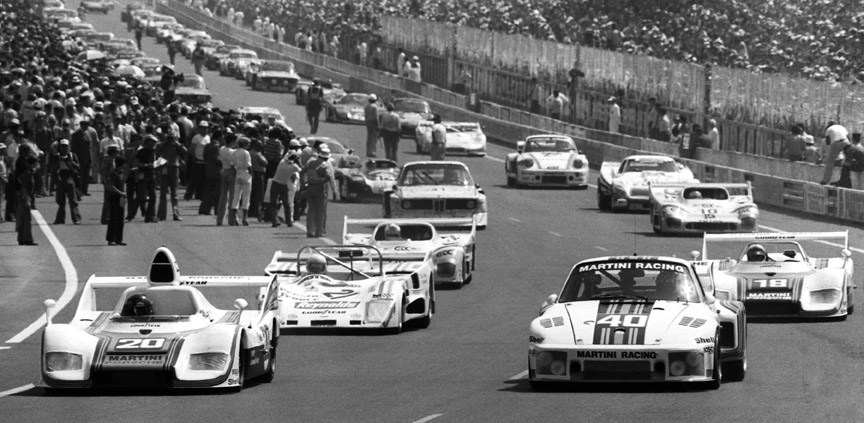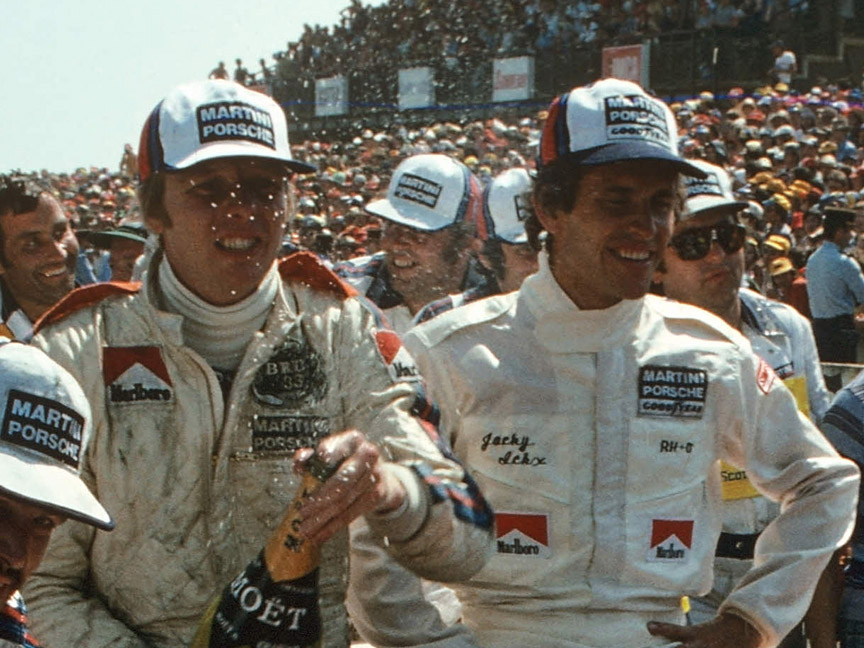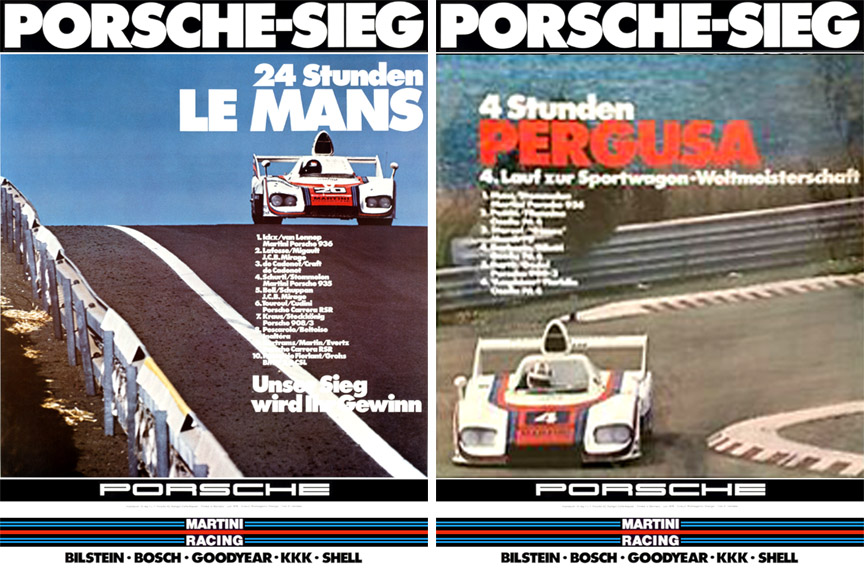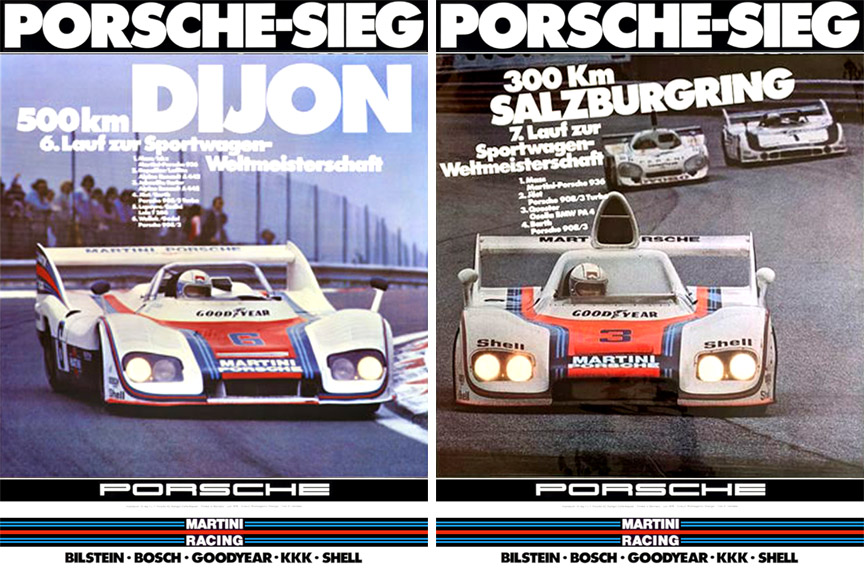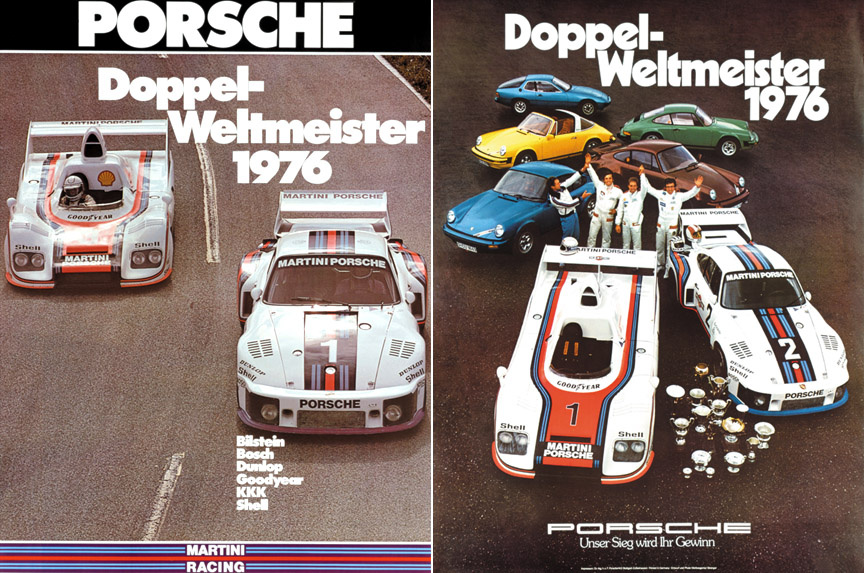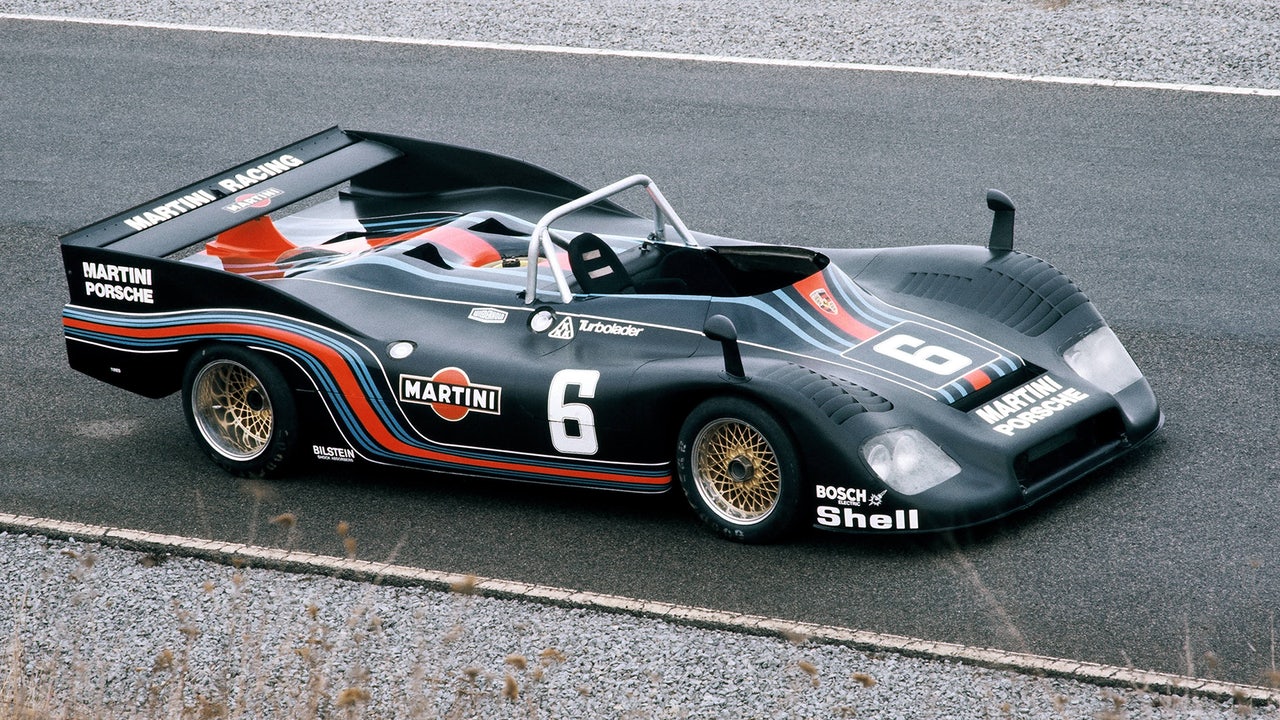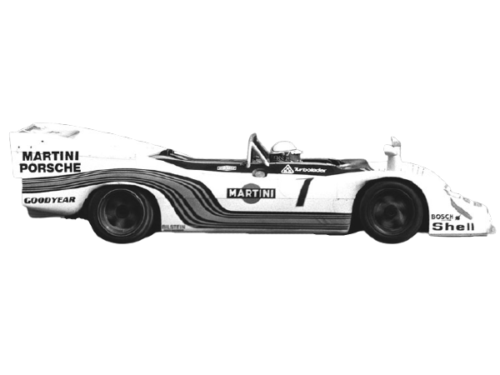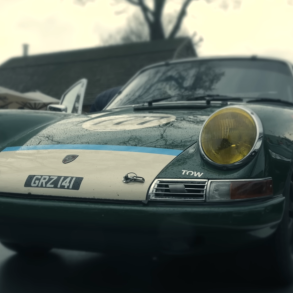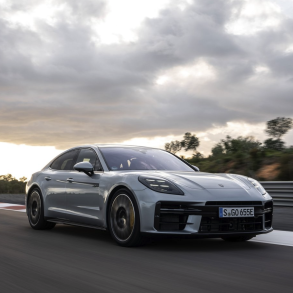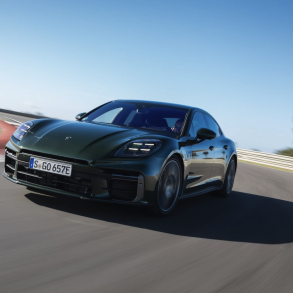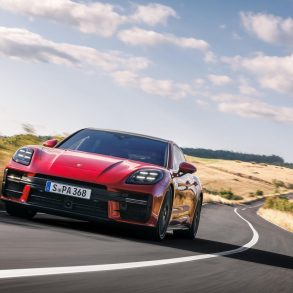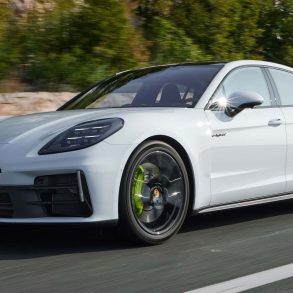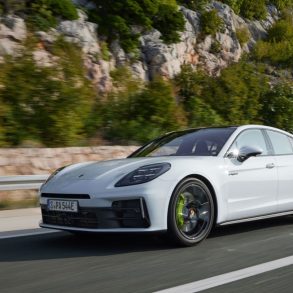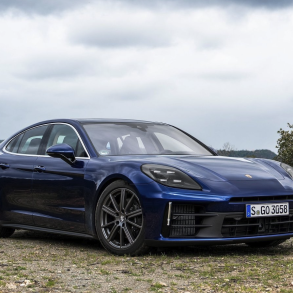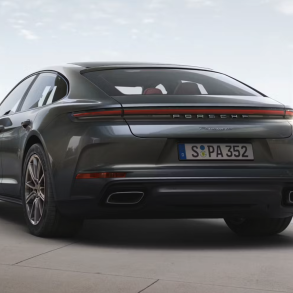Porsche 936/76 (1976)
Premiere: 1976 April 4 at Nürburgring / Engine: 2.1-litre flat-6, single turbo / Gearbox: 5-speed / Achievements: 1976 World Sportscar Championship winner, 1976 Le Mans winner
The Group 6 Porsche 936 was the successor to the 908/03 and the turbocharged 917. While the 917 had a 5.4-litre flat-12 biturbo engine, the 936 got a 2.1-litre flat-6 single turbo engine. The reason for the 2.1-litre displacement was to fit inside the 3-litre class (turbocharged cars had a coefficient of 1.4). Despite the small capacity, the engine developed more than five hundred horsepower. Imagine such power in a ~700 kg/1540 lb car!
In order to test the new 936 immediately, before the spring arrives, the car was taken to southern France in February 1976. Because of the warmer weather, the Paul Ricard race track in Le Castellet near Mediterranean port-town Marseille was one of the best places in Europe to test racing cars in winter time.
The 936 saw its first race action at the Nürburgring 300 km race on April 4, 1976. The 936 qualified between two Alpines. In the race, the throttle control broke on the 936. It was not a 24-hour race, so there was no time to fix the car properly. The quick solution was to fasten the linkage in a fixed position and Rolf Stommelen was sent out on the track to finish the race. He used the engine’s on/off-switch to cover the remaining distance and to finish 5th. It was a terrifying experience. Was it already during the testing or because of that race, but the matte black car got its nickname: “Black Widow”. The race was won with Joest Racing’s turbocharged 908 with a body that looked rather similar to the turbocharged 917 and the 936.
While the car with chassis number 936-001 was used at the Nürburgring, three weeks later, the 936-002 was entered at the Monza 4 hour race. From now on, the 936 were painted white with the “Black Widow” reputation abandoned. Jacky Ickx and Jochen Mass won the 1976 Monza 4 hour race after starting from pole position. The World Sportscar Championship (WSC) carousel stayed in Italy and four weeks later Ickx/Mass also won the Imola 500 km race.
Then came the Le Mans 24 hour race which was not part of the championship. At the Le Mans, one of the 936 was equipped with a huge air scoop behind the driver, to provide cooling for the intercoolers and the engine.
The Martini Porsche 936-002 #20 driven by Jacky Ickx and Gijs van Lennep won Le Mans, while the Martini Joest team’s 936-001 had to retire the race because of an engine problem.
1976 Le Mans Documentary
Two weeks after the 1976 Le Mans, the 936 was back at the World Sportscar Championship. It was the Coppa Florio 4 hour race at the Pergusa track in Sicily, Italy. The 936 with scoop (936-002) driven by Rolf Stommelen and Jochen Mass was victorious.
There was an 8 weeks break in the WSC calendar before continuation in America. The 936-002 was shipped to Canada, where it won the 3-litre class at Mosport and was third overall after the 8.1-litre Group 7 cars. Two weeks later, in September 1976, the “no scoop” 936-001 contested the Dijon 500 km race in France with Jacky Ickx and Jochen Mass winning the race. Another 2 weeks later, the 936-002 driven by Mass won the last race of the 1976 World Sportscar Championship season, the 300 km of Salzburgring in Austria.
Martini Racing was the only team that attended all the 1976 WSC races and with a car like Porsche 936 they naturally won the championship in front of Alpine, Osella, Lola, March and Chevron.
After the 1976 racing season, the 936/76 cars were converted to new 936/77 cars with biturbo engine and different body.
History & Details in Pictures
